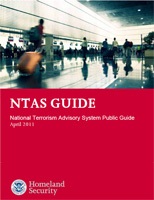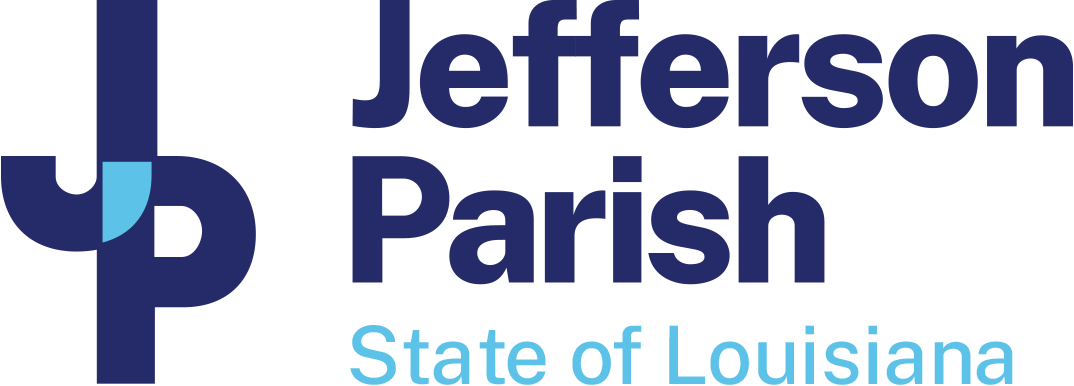Citizen Awareness Information
J.P. Emergency Operations
& Communications Center
910 3rd Street
Gretna, LA 70053
Phone: 504.349.5360
Fax: 504.227.1315
Email the Emergency Management Department
RADIO FREQUENCY SYSTEM
Louisiana Emergency Alert System
The following radio stations are key participants in the Louisiana Emergency Alert System. In the event of an emergency, these stations will broadcast emergency information.
|
Alexandria AM 970 (KSYL) AM 580 (KXMX) FM 96.0 (KZMZ) FM 93.1 (KQID) Baton Rouge AM 1150 (WJBO) FM 102.5 (WFMF) Crowley FM 102.9(KAJN) |
Lafayette AM 1150 (WJBO) FM 102.5 (WFMF) Lake Charles AM 1470 (KLCL) FM 99.5 (KHLA) New Orleans AM 870 (WWL) FM 105.3 (WWL) FM 101.9 (WLMG) |
Northeast AM 540 (KNOE) FM 102.5 (WFMF) Ruston AM 1490 (KRUS) FM 107.5 (KXKZ) Shreveport AM 1130 (KWKH) FM 94.5 (KWKH) |
NOAA Weather Radio (NWR)
NOAA Weather Radio is a nationwide network of radio stations broadcasting continuous weather information direct from a nearby National Weather Service office. NWR broadcasts National Weather Service warnings, watches, forecasts and other hazard information 24 hours a day.
SEVERE WEATHER TERMS TO KNOW ...
Natural disasters most likely to occur in Louisiana, particularly in low-lying areas bordering the Gulf of Mexico, include hurricanes and flooding due to heavy rains. Residents should be familiar with several terms that describe severe weather conditions:
Storm Surge: An abnormal rise of the sea along a shore as the result, primarily, of the winds from a storm.
Watch: Adverse conditions are possible in the specified area of the WATCH, usually within 36 hours. May be applied to thunderstorms, tornadoes, floods, or hurricanes.
Warning: Adverse conditions are expected in the specified area of the WARNING, usually within 24 hours. May be applied to thunderstorms, tornadoes, floods, or hurricanes.
MEASURING HURRICANE STRENGTH
The Saffir-Simpson Hurricane Scale
Category 1: Minimal Damage. Winds 74-95 mph.
Storm surge generally 4-5 ft. above normal.
Category 2: Moderate Damage. Winds 96-110 mph.
Storm surge generally 6-8 ft. above normal.
Category 3: Extensive Damage. Winds 111-130 mph.
Storm surge generally 9-12 ft. above normal.
Category 4: Extreme Damage. Winds 131-155 mph.
Storm surge generally 13-18 ft. above normal.
Category 5: Catastrophic Damage. Winds > 155 mph.
Storm surge generally > 18 ft. above normal.
PUBLIC SHELTER INFORMATION
Shelters are operated by trained individuals and ensure that the safety, security, and basic needs of its residents are met.
What to bring to a shelter?
- Change of clothing, blanket, and pillow for each family member
- Your disaster supply kit, including food, medications, comfort items, and
special items for infant or elderly family members.
What NOT to bring?
- There are no weapons, drugs, alcohol allowed in shelters.
 |
SHELTER-IN-PLACE INFORMATION The National Terrorism Advisory System, or NTAS, replaced the color-coded Homeland Security Advisory System (HSAS) in April, 2011. The NTAS system effectively communicates information about terrorist threats by providing timely, detailed information to the public, government agencies, first responders, airports and other transportation hubs, and the private sector. Prepare your family for these types of emergencies by visiting http://www.ready.gov/shelter. For more information on Homeland Security advisories, visit the National Terrorism Advisory System link: https://www.dhs.gov/topic/ntas. |
SHELTER-IN-PLACE INFORMATION
"Sheltering in place" is a precaution aimed at keeping citizens safe while remaining indoors. This is no the same thing as evacuating to a shelter and not recommended for hurricanes. When a "shelter-in-place" order is given by either local or state government, citizens within the affected area should take the following protective measures:
- Go indoors and close all windows and doors
- Turn off all sources of outside air (i.e. air conditions and ventilation
fans/ducts). - Remain indoors until notified that it is safe to move outdoors
- Stay tuned to you local radio/ television station to receive official notices.
- Limit telephone usage to emergency calls only. This is to prevent the
telephone lines from being overloaded with non-emergency calls.
PREPARING YOUR PETS
If you are a pet owner, your family's disaster plan must include your pets. Bring pets indoors at the first sign of danger. If you must evacuate, the best thing you can do to protect your pets is to evacuate them too.
- Identify boarding facilities, veterinarians, or hotels outside of the affected
areas that can accept your pets. If you have notice of an impending disaster, call ahead for reservations. - Pet-friendly shelters may be opened during an this information will be available
at shelter information points. - Create a disaster readiness kit for you pet including food, water, first aid
supplies, feeding dishes, leashes, carrier, blanket, etc.. - Make sure all family members are aware of these preparations.
